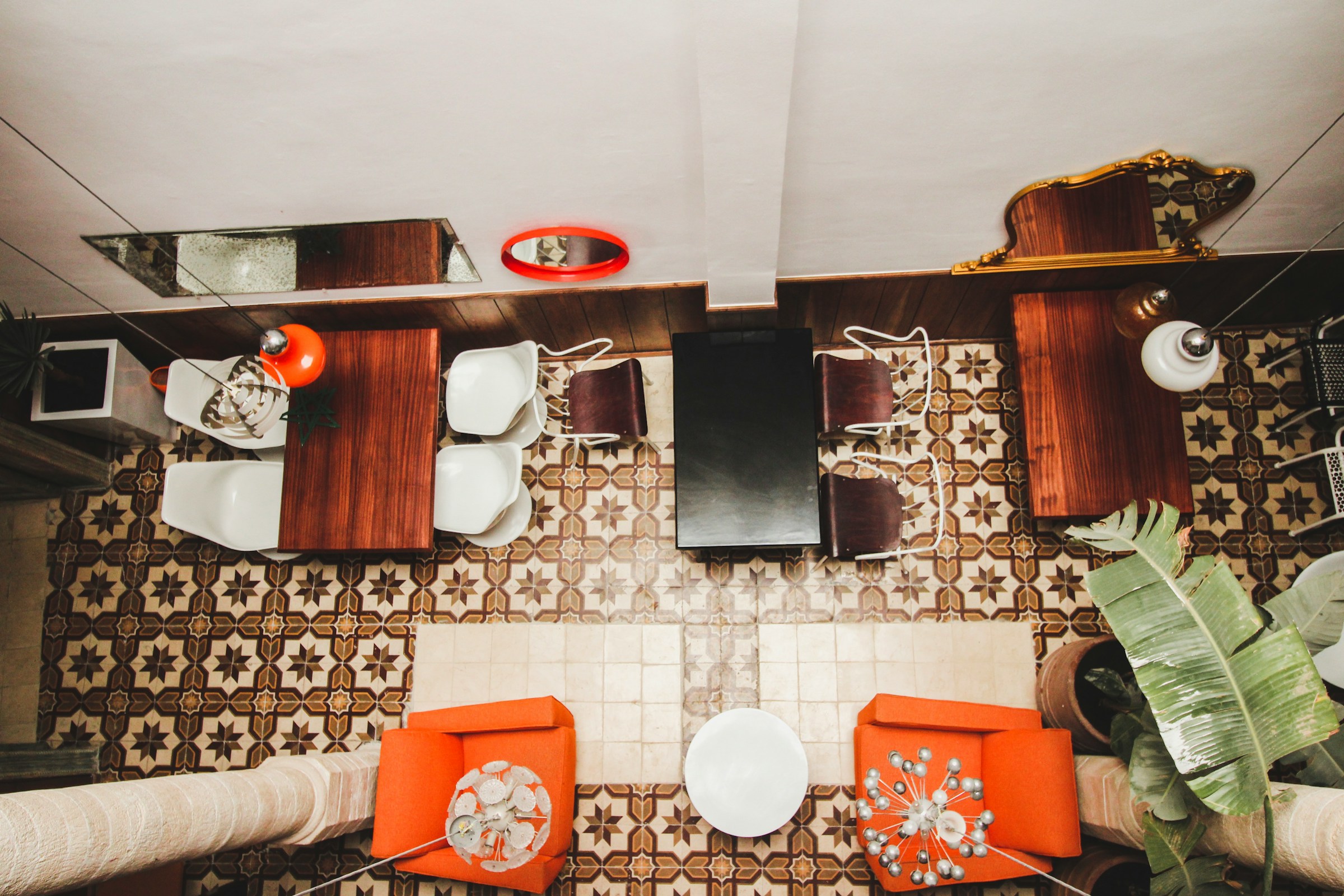In an increasingly competitive business landscape, the hospitality industry is constantly looking for ways to stand out and create a unique experience for their customers. One such method that has gained popularity in recent years is the ancient Chinese art of Feng Shui. By manipulating the energy, or “Qi”, and balancing the elements in a dining space, Feng Shui can enhance the overall ambiance and flow of a restaurant, leading to improved customer satisfaction and increased business. Let’s delve into how you can apply the principles of Feng Shui to your restaurant’s dining area.
Incorporating Elements of Feng Shui In The Design Process
When designing your restaurant, it’s crucial to first understand the basic principles of Feng Shui. This Chinese practice emphasizes the balance and flow of energy, or Qi, in a space. The five elements of Feng Shui — wood, fire, earth, metal, and water — each carry a unique energy, and their harmonious combination can create a vibrant, welcoming atmosphere that attracts customers and boosts business.
In parallel : What are the crucial factors in selecting a high-quality meat supplier for a steakhouse?
While planning your restaurant layout, pay close attention to the entrance. According to Feng Shui, the entrance, or “mouth of Qi,” plays a crucial role in attracting positive energy. It should be free of obstacles and designed in such a way that it draws in energy, rather than repelling it. This can be achieved by using warm welcoming colors and ensuring a clear path from the entrance to the dining area.
Balancing The Five Elements In The Dining Space
Each of the five elements in Feng Shui corresponds to a particular color and shape. By incorporating these elements in your dining area, you can create a harmonious balance of energy.
In parallel : What innovative ingredients can be used to create unique ice cream flavors for a dessert bar?
-
Wood: Represented by the color green and rectangular shapes, wood symbolizes growth and vitality. Plants and wooden furniture are excellent ways to incorporate this element.
-
Fire: Red, triangular shapes represent the fire element, symbolizing passion and energy. You can introduce this element through lighting, candles or red accents in your decor.
-
Earth: The earth element is associated with square shapes and earthy tones like yellow and brown. Using these colors and shapes in your seating or table arrangements can help ground the energy in your dining area.
-
Metal: Represented by white and round shapes, the metal element symbolizes efficiency and clarity. Use of metal accents and light colors can introduce this element into your space.
-
Water: The water element is associated with the color black and wavy shapes, symbolizing wisdom and serenity. Aquariums, fountains or artworks depicting water are good ways to incorporate this element.
Enhancing The Energy Flow In The Kitchen
In Feng Shui, the kitchen is considered a crucial area that can significantly influence a restaurant’s success. A well-organized and clean kitchen fosters clear and positive energy. It’s advisable to keep your kitchen clutter-free and ensure that all equipment is functional and in the right place.
Colors play a significant role in Feng Shui. Light or neutral colors are considered best for kitchens as they help maintain a clean and calm environment. It’s also important to balance the water element associated with food preparation and the fire element related to cooking to ensure harmony and balance.
Color and Lighting To Influence The Energy Flow
Colors and lighting have a significant impact on the ambiance and energy of a dining space. According to Feng Shui, different colors are associated with different elements and can significantly influence the energy of a room. For instance, red stands for the fire element and can stimulate appetite, making it a popular choice for restaurants.
Lighting is another essential aspect of Feng Shui. Soft, warm lighting encourages a relaxed and intimate atmosphere. It’s also advisable to use natural light as much as possible to maintain a positive and welcoming energy.
Creating A Balance For A Harmonious Dining Experience
Creating a balance between the different elements and energies is the key to a successful Feng Shui design. The dining table, being the focal point of the dining area, plays a crucial role in creating this balance. According to Feng Shui, a round or oval table is considered best as it promotes equality and unity.
The arrangement of the tables also significantly impacts the flow of energy. It’s advisable to maintain a clear path between the tables to allow the energy to flow freely.
In essence, a carefully planned and thoughtfully designed restaurant that follows the principles of Feng Shui can significantly enhance the flow of energy and create a dining experience that not only delights the customers but also brings prosperity and success.
Utilizing the Bagua Map For Restaurant Layout
The Bagua map is a fundamental tool in Feng Shui. This octagonal grid contains the symbols of the I Ching, the ancient oracle on which Feng Shui is based. The Bagua map is used to determine which parts of a space relate to particular aspects of life. In other words, which areas of your restaurant connect to the different energies that influence your business’s prosperity, reputation, and growth.
When applying the Bagua map in your restaurant, you should begin at the front door – the restaurant’s mouth of Qi. This is the primary energy gateway. The Bagua divides your restaurant into nine sections, each representing a different life aspect. For instance, the back left corner of your restaurant, when viewed from the front door, represents the area for wealth and prosperity. Enhancing this area could potentially improve your business profitability.
Another critical area is the back center of the restaurant, representing fame and reputation. Attention to the Feng Shui in this area can help enhance your restaurant’s reputation, attracting more customers.
Keep in mind though that Feng Shui is all about balance. Overemphasis on one area at the expense of others can create disharmony. Therefore, strive to create a sense of balance throughout the entire restaurant space.
Using Yin Yang Principles For A Balanced Dining Space
The principles of Yin Yang are another fundamental aspect of Feng Shui. They represent the two opposite but complementary energies in the universe. Yin is the passive, soft, and feminine energy, while Yang is the active, hard, and masculine energy.
In the context of a restaurant, the dining area should perfectly balance these two energies to create an atmosphere that’s both vibrant and comfortable. A balanced dining space will ensure customers are relaxed and at ease, while also feeling the lively energy that makes the dining experience enjoyable.
A practical way to balance the Yin Yang energies in your dining area could be through the choice of colors and materials. Cool colors and soft fabrics represent Yin energy, while warm colors and hard surfaces represent Yang energy.
Another way could be through the design and arrangement of dining tables and chairs. For instance, you could balance a large, sturdy (Yang) dining table with soft, plush (Yin) dining chairs.
Remember, the ultimate goal of applying Feng Shui principles to your restaurant is to create a dining space where positive energy flows freely. This will not only make your customers feel more comfortable and relaxed but also set the scene for a truly memorable dining experience.
Conclusion
Incorporating Feng Shui principles in the interior design of a restaurant is a holistic approach that goes far beyond aesthetics. It’s about creating an environment that boosts the flow of positive energy, ultimately enhancing the dining experience and leading to business success.
Whether it’s choosing the right colors and lighting, balancing the Yin Yang energies, or using the Bagua map for an optimal layout, each aspect plays a critical role in shaping the energy of your dining space.
By understanding and thoughtfully applying the principles of Feng Shui, you can create a dining area that exudes a sense of balance, harmony, and prosperity. This will not only attract more customers but also encourage them to return, leading to a successful and thriving restaurant. Remember, the key to a successful Feng Shui design is balance – a balanced environment leads to a balanced, harmonious dining experience.






